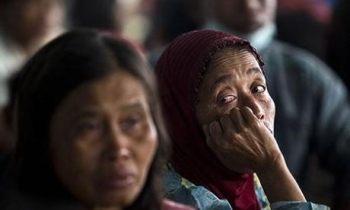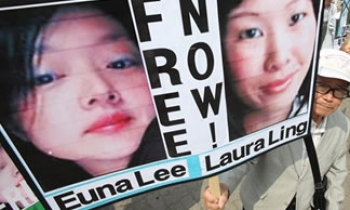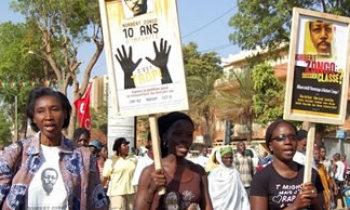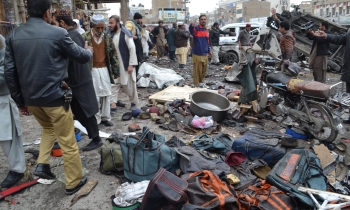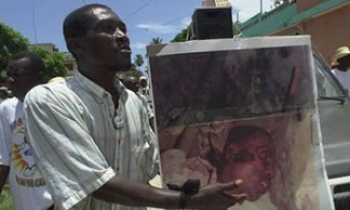"Grassroots" or independent community newspapers yield good returns on advertising spending, a survey in South Africa has concluded. Advertisers, and particularly national advertisers, need to rethink entrenched perceptions of small newspapers and the communities they serve, as being in some way unreliable or unworthy of support.

These findings have been reported in Key Editorial and Business Strategies: A Case Study of Six Independent Community Newspapers, published recently by the Sol Plaatje Institute for Media Management (SPI). Funded by the Media Development and Diversity Agency (MDDA), SPI conducted this study with the goal of assisting small independent newspapers by exploring and publicising the many challenges that they face in their efforts to become sustainable enterprises. The intent, according to the institute, was to reveal key business and editorial strategies successful publications have adopted in order to overcome these challenges.
SPI conducted in-depth case studies of six successful South African newspapers serving their local communities. Newspapers were selected from a pool of 20 newspapers, which were nominated as successful ventures by MDDA and the Association of Independent Publishers of South Africa (AIP).
All 20 newspapers were sent questionnaires. These collected information on each newspaper's background, money matters, the composition of staff, and the manager's perception of the opportunities and difficulties facing the small independent community newspapers. Based on the researchers' interpretations of responses in the questionnaires, SPI selected six newspapers for the case study phase of the research.
Among other things, the researchers spent a considerable amount of time gauging the perception of advertisers. The newspapers researched often acted as a voice for the people: editorial content was locally sourced and when it was not, it was at least locally relevant. This was the key point highlighted by advertisers throughout.
The report said, "The newspapers act as the ears of the people too. The papers in this study do so by supplying readers with information on municipal, government, NGO and other organisations' projects and programmes, which has the potential to assist community members to address problems they face. Every case study in this research fulfils this task."

Advertisers of the KZN Community Newspaper aserted that the paper met the needs of its community because it provided them with local information that was of interest and relevance to them. It was written in Zulu, which also made it accessible to the community. Moreover, the paper was distributed in the rural areas of KwaZulu Natal where access to printed information was scarce. On the business side, advertising clients enjoyed good service from the paper and most found the community responded positively to advertisements. The bi-monthly KZN has a circulation of 30,000.
It is not that advertisers belong to the same community. An advertiser told the researchers, "We are a marketing company and we're always running ads. So we were looking for sales people who are from the Black communities because we wanted to expand our services in the Black township… But we only advertised in the newspaper once as we did not get the kind of response we have anticipated."
In case of the Southern and Soweto Globe, most of the advertisers discovered the newspaper through its marketing consultant. Several reasons motivated their choice to advertise in the paper. Firstly, it reached their target market. Secondly, it had a large distribution. Thirdly, advertising rates were reasonable. And finally, the marketing consultant was persistent. An advertiser said: "The Southern Globe sits on your back."
Advertisers attributed the paper's success to three factors. They appreciated its good customer service, which they found professional and friendly. In their opinion they got good value for money as the paper's advertising rates were reasonable and adverts generated the right response: "The Southern Globe's success is visible and measurable in terms of the response to my adverts." Also, they pointed out that the editorial of the Southern and Soweto Globe contributed to its success. Editorial content was interesting and of value to readers: "It covers local news that matters to the community – things that people are interested in reading about."
The editorial content has has been the attracting feature for those who advertise in the Eastern Free State Issue. Advertisers interviewed identified two main factors contributing to the newspaper's success. The first related to editorial content. Advertisers felt the newspaper's content was professional and objective, and said that it focused on current issues that were of importance to the community.

It is not just the local or editorial factors that have been attracting advertisers to the community newspapers in South Africa. An advertiser made specific mention of the Limpopo Mirror's community outreach activities: "The newspaper is very committed to the community…Like many local athletes and people in general are involved in its marathon [and] the newspaper organises the marathon from the beginning to the end." The weekly Limpopo Mirror has a circulation of a little more than 8,000.
However, it is not that advertisers always walk in with their money. Most of the newspapers surveyed both in the pilot and actual phases of the project said the high incidence of failed local newspapers have contributed to making advertisers reluctant to invest in the sector. "There have been too many 'fly-by-night' publishing companies that give the industry a bad name," the Free4All felt.
The EFS Issue said, "Independent newspapers also face the difficulty of trying to break into the national advertising market. Many national advertisers want to see that a newspaper has been established for some time before they take the 'risk' of advertising. So small newspapers have to dig in their heels and try and make it through the very rough and lean first months/years of getting established."
Grassroots newspapers also find it difficult to compete with the larger commercial newspaper publishers. Due to their smaller scale they are unable to offer advertisers the same prices and distribution numbers. According to the EFS Issue, "Competition from the big newspaper groups is also pretty tough. In many areas the big newspaper groups have the monopoly and they have the advantage of being able to market all their newspapers to national advertisers together and offer much larger discounts as well as package deals which independent newspapers can't do."
So, how can these challenges be overcome? Most of the participating newspapers felt that they would have a better chance of securing advertising if local newspapers united their efforts. According to the Nkomazi Voice, "If grassroots newspapers aren't grouping themselves it becomes very difficult to sell ads. Again they need to group to be able to talk in one voice in times of difficulty and sidelining or unacceptability in the mainstream. They need collective operation to cut costs when they do things in bulk e.g. printing and controlling their editorial content to avoid legal loopholes."

